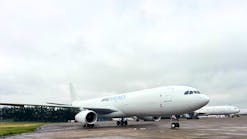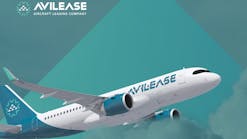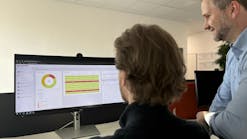Emphasis on Fuel Quality
Oil industry veteran walks through the fuel delivery, handling process
By Fred Barnes, Manager of Aviation, Product Engineering, Chevron Products Company
May 2001
Fred Barnes is the manager of aviation for the product engineering department of Chevron Products Company. Since entering aviation in 1981, Barnes has specialized in fuel, from specifications to test methods to quality control. Here, he shares his thoughts on the fuel delivery/handling process.
There’s an entire chain of events
that occurs from the time the product is manufactured to the point where
it reaches the aircraft. It’s basically the custody transfer chain.
The fuel that’s used in an aircraft
must meet the Type Certificate or Supplemental Type Certificate for that
aircraft. That means we have to make sure it reaches the aircraft clean,
dry, and on specification. It requires everyone in the whole custody chain
to do their job, and to have the courage of their convictions. If they
see something wrong or do something wrong, they must be willing to stop
the flow of product until the question resolved.
We all talk about customers, but from Chevron’s
product integrity perspective, I consider the airplane my customer. So
quality supercedes any kind of pricing or any other competitive consideration.
It’s incumbent upon the pilot to make
sure he gets the right specification fuel into his aircraft, and upon
the distribution chain to make sure that it meets that specification.
So we start at the refinery with a fuel
that has been tested to all applicable specifications, using official
test methods such as ASTM. Then as we move it through the system, we implement
a series of procedures and processes that assure that the product has
not been contaminated and that we’re keeping it to an acceptable
level of cleanliness.
We have five principles that we operate
on: equipment; procedures; testing; training; and documentation. We apply
those five principles to all phases of the distribution system.
A key thing for this type of system is you
must control the quality rather than let it go haphazard through the marketplace.
For instance, in equipment, we have equipment that is dedicated to aviation
fuels; and we have procedures that are used as standard industry practices
for keeping the equipment functioning properly, for maintaining the filtration
equipment and the terminal and transportation equipment.
So whether the product moves by barge, truck,
rail, or pipeline, it’s all maintained to a standard to ensure that
the quality is protected.
TESTING & INSPECTING
When we get it to an intermediate point
in the system, such as a terminal, we test the product and we run key
property tests that are selected specifically to show us when there’s
a problem with the product. We select these key properties to assure that
we have not contaminated it with other products, dirt, water, or other
unacceptable material.
We implement this type of testing at every
point when the product changes hands. This goes down to individual airport
dealers who also check the product when they receive it, and have procedures
to follow and have documentation of the quality.
Regarding fixed base operations, the majority
of airport dealers receive their fuel by truck. Our dealers are required
to log the received product into their system. We do not have any unattended
deliveries; we will not deliver into a non-tagged system.
The dealer checks the product against the
bill of lading and does a visual check (white bucket test) for particles
and water. Each truck compartment is checked prior to offloading. In addition,
API gravity checks are done to make sure the product is not delivered
into the wrong tank.
In this "real" world, there is
no such thing as "zero" particles or water, so the FBO is trained
to inspect the fuel to be sure it’s bright and clear. If the dealer
pulls a white bucket sample off the bottom or a compartment and sees one
little fleck of rust, that’s not a rejection. If it goes beyond his
criteria, however, the fuel will be returned to the shipping source.
Our standards require that proper filtration
be installed at each airport facility. Regardless of facility design,
the dealer is required to use only components which meet aviation standards
for vessels and coalescers, monitor cartridges, or micronic filters. For
example, a filter separator vessel (coalescing unit) must meet API 1581,
latest edition. Industry standards for marking lines and valves are required.
When appropriate, we have dealers follow
ATA 103 for airlines. ATA 103 is called a specification by the Air Transport
Association, and it’s a document that the airlines can use for their
own QC requirements. The purpose originally was to standardize some procedures
so the into-plane agents could do a standard procedure rather than 15
individual ones with multiple airline customers. However, with the way
our regulatory system works, each airline must incorporate the ATA document
into their own operating manual because that’s what the FAA holds
them liable for. Some airlines have adopted it carte blanc, other airlines
have adopted certain features. By and large, they’ve accepted it.
DOCUMENTATION
Documentation is one of the more common
deficiencies — the dealers not keeping the records that they should
be keeping on a daily basis. Documentation is an important part of the
chain; it gives us a record and if personnel are doing the documentation
they’re probably doing the QC checks.
One of the advantages of documentation is
if somebody has a complaint and a dealer has an excellent record of documentation,
he can produce that evidence. If he has no records there’s always
a cloud of suspicion. It’s especially a problem with employee changeover.
A new person may not appreciate how important it is; that’s why we
try to instill the passion of this business into our system.
Future of Fuels
From Chevron’s Technical Review-aviation fuels, a guidance document for dealers...
"In 1986, the U.S. Environ-mental Protection Agency banned lead
in motor gasoline. Although avgas was not included in the ban, concerns
that the use of lead in avgas would eventually be restricted led the industry
to begin looking for unleaded replacement fuels in the early 1990s.
"As of this writing, no viable fuels
(to replace Avgas 100LL) have emerged from this program."
"ASTM recently approved this new (Grade 82UL) specification for a low-octane unleaded avgas, D6227... Grade 82UL is not a replacement for Grade 80; it is intended only for aircraft piston engines specifically developed to use this unleaded avgas."





